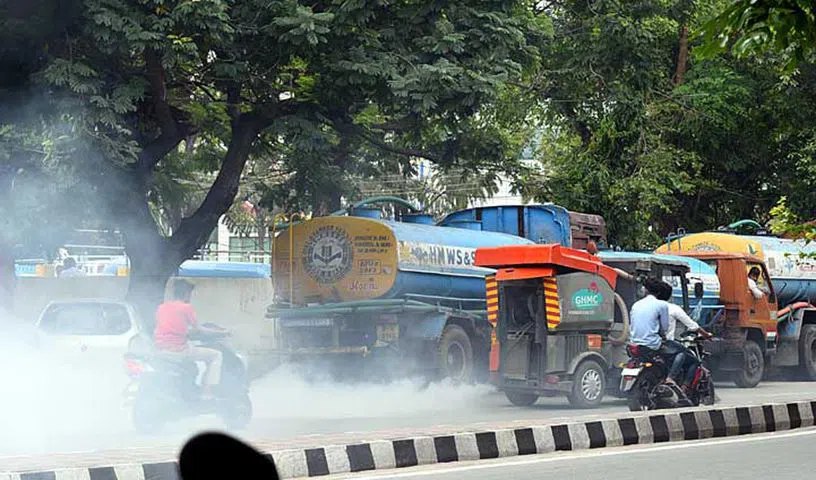Hyderabad air quality reaches ‘hazardous’ levels as PM2.5 values soar beyond safety standards

Hyderabad’s air quality monitoring stations, positioned across 14 locations by the CPCB and TSPCB, paint a grim picture of air pollution
Hyderabad: The air quality in Hyderabad has reached hazardous levels, according to a new report from Greenpeace titled ‘SPARE THE AIR’ 2nd Edition, which analyzed 2023 air pollution trends. The findings reveal an alarming escalation in particulate matter concentrations across the city.
Hyderabad’s air quality monitoring stations, positioned across 14 locations by the Central Pollution Control Board (CPCB) and Telangana State Pollution Control Board (TSPCB), paint a grim picture of air pollution.
The annual average values for PM2.5, the tiny but deadly particulate matter, were found to be five to six times higher than World Health Organization (WHO) revised guidelines at seven locations including Central University, New Malakpet, and Somajiguda. In areas including Bollaram industrial area, IDA Pashamylaram, Kokapet, Sanathnagar, and Zoo Park, these levels were an alarming seven to eight times higher than the WHO standards.
The scenario is equally bleak for PM10, a larger particulate that poses severe health risks. In locations like Bollaram industrial area, IDA Pashamylaram, Zoo Park, Nacharam and Kokapet, the PM10 concentrations were found to be six to seven times higher than the WHO revised standards. Other areas, including IITH Kandi, Somajiguda, Ramachandrapuram, Kompally, New Malakpet, and Nacharam, registered levels that were four to five times higher.
The report stated that while PM2.5 levels at five stations were slightly higher than the National Ambient Air Quality Standards (NAAQS), all locations recorded PM10 levels ranging from slightly to 1.5 times above NAAQS limits.
The monthly air quality trends for 2023 were equally dire. Data showed that PM2.5 levels from January through April and again in November and December were consistently above NAAQS guidelines. The situation was similarly troubling for PM10, which exceeded NAAQS standards from January to June, and again in August, October, November, and December.







